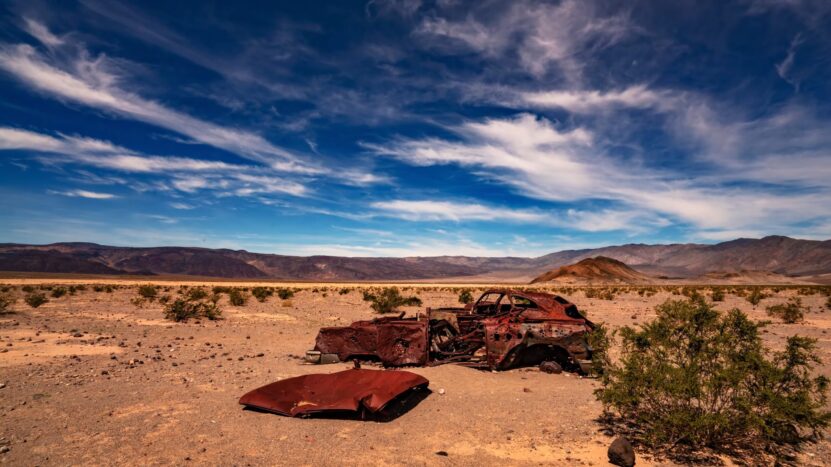Death Valley is an extreme landscape, known for being the hottest, driest, and lowest national park. Despite its reputation as a scorching desert, the park offers visitors a diverse range of landscapes to explore. From snow-capped peaks to lush wildflower meadows and small oases, the contrast of environments is striking.
Established on October 24, 1994, Death Valley National Park is a challenging but beautiful landscape where unique wildlife have adapted to the arid, harsh environment. The park is located in California and Nevada and is the largest national park in the lower 48 states. With nearly 1,000 miles of roads, visitors have access to both popular and remote locations in the park. In honor of the park’s anniversary, it’s worth celebrating the natural wonders and stunning scenery that Death Valley has to offer.
Here are the 10 most interesting Death Valley facts.
Death Valley: The Lowest Point in North America
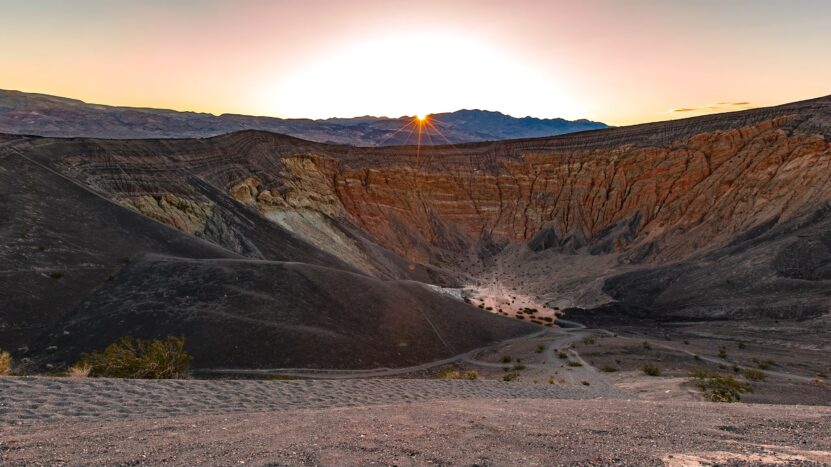
Death Valley is a land of extremes, and one of its notable features is being the lowest point in North America. The valley floor is situated at an elevation of 282 feet below sea level, making it the lowest point in the continent. This unique topography makes Death Valley a fascinating destination for visitors from around the world.
The lowest point in North America is located in the Badwater Basin, which is a large salt flat that stretches for miles. The salt flat is formed by the evaporation of ancient lakes that once covered the valley floor. The salt flat is a striking feature of Death Valley, with its white, cracked surface contrasting with the surrounding mountains.
Visitors to Death Valley can explore the Badwater Basin by walking on the salt flats. The area is accessible by a boardwalk that leads to a viewing platform where visitors can observe the expansive salt flat. The boardwalk also provides information about the geological history of the area and the unique adaptations of the wildlife that call the salt flats home.
The lowest point in North America is not the only unique feature of Death Valley. The park is also home to some of the hottest temperatures on Earth, with summer temperatures reaching up to 130°F. The extreme environment and unique geology of Death Valley make it a fascinating destination for scientists, hikers, and nature enthusiasts.
Experiencing the Extreme Heat of Death Valley
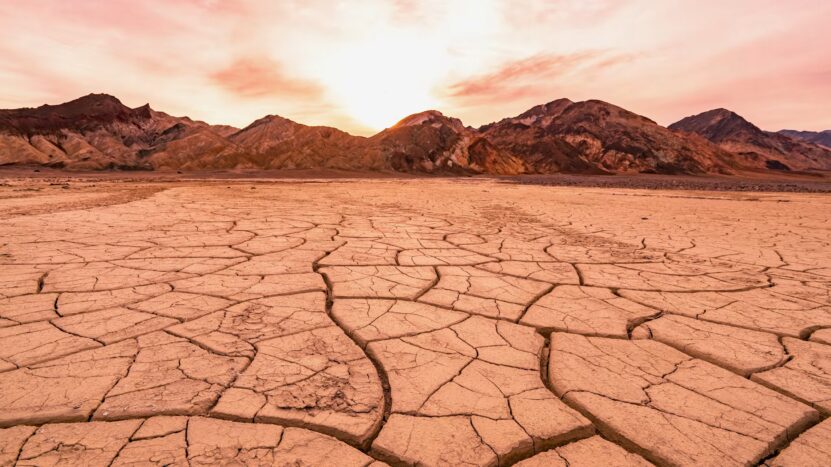
When it comes to heat, there are few places on Earth that can compare to Death Valley National Park. With summer temperatures reaching up to 130°F, it’s no wonder that Death Valley is known as one of the hottest places on the planet.
The extreme heat of Death Valley can be challenging for visitors, and it’s important to take precautions to stay safe. It is recommended to visit the park in the cooler months, typically from November to March, to avoid the scorching summer temperatures. If visiting during the summer, it’s essential to bring plenty of water, wear loose-fitting, light-colored clothing, and avoid strenuous activity during the hottest part of the day.
Despite the challenges of the extreme heat, there are still plenty of things to see and do in Death Valley. Visitors can explore the park’s unique geological formations, including the Badwater Basin salt flats, Mesquite Flat Sand Dunes, and Zabriskie Point. The park is also home to a diverse range of wildlife, including bighorn sheep, coyotes, and kit foxes.
Visitors can also take advantage of the park’s night skies, which offer some of the best stargazing in the world. The remote location and lack of light pollution make Death Valley an ideal destination for astronomers and amateur stargazers alike.
The Beauty of Wildflowers in Death Valley
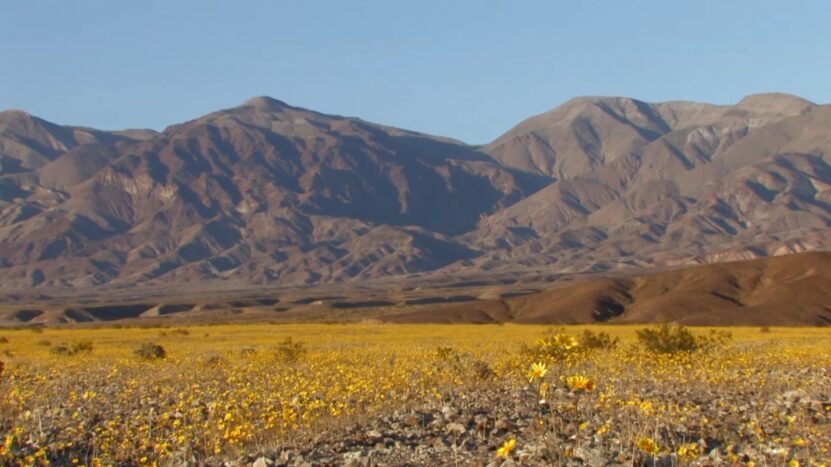
Death Valley may be known for its harsh desert environment, but visitors to the park are often surprised by the stunning displays of wildflowers that bloom in the spring. The desert bursts into color with carpets of bright wildflowers, bringing life and vitality to the barren landscape.
The blooming of wildflowers in Death Valley is a result of the unique climate and geology of the area. The park’s elevation, combined with the rare occurrence of winter rains, creates the perfect conditions for wildflowers to bloom. The blossoms can appear seemingly overnight, transforming the desert into a vibrant and colorful landscape.
Visitors to Death Valley can explore the park’s wildflower displays on hiking trails and scenic drives. The park offers a range of hiking trails that take visitors through some of the best wildflower viewing areas, including Golden Canyon and the Alluvial Fan. Visitors can also enjoy the wildflowers from the comfort of their car by taking scenic drives along roads such as Badwater Road and Artist’s Drive.
The wildflower season typically occurs from February to April, but the timing and intensity of the blooms can vary from year to year depending on the weather conditions. To get the most out of a visit to Death Valley during the wildflower season, it’s important to check with the park rangers for current bloom conditions.
The Mysterious Moving Rocks of Death Valley
One of the most intriguing phenomena in Death Valley National Park is the mysterious moving rocks found on the Racetrack Playa. These rocks, which weigh up to hundreds of pounds, appear to move across the desert floor on their own, leaving long tracks behind them.
For many years, scientists and park visitors alike were mystified by the movement of these rocks, and various theories were proposed to explain the phenomenon. One popular theory was that the rocks were moved by strong winds during rare rain events, but this theory was eventually disproved.
In 2014, scientists finally solved the mystery of the moving rocks by using time-lapse photography and GPS tracking devices. They discovered that the rocks move across the desert floor when a thin sheet of ice forms on the playa after a rare rain event. As the sun rises and the ice begins to melt, the rocks are pushed along the wet surface by the wind, leaving behind long tracks in the mud.
The moving rocks of Death Valley are a unique and fascinating feature of the park and attract visitors from around the world. The Racetrack Playa is a remote location, and visitors must have a high-clearance vehicle and be prepared for a challenging drive to reach it. However, the experience of seeing the moving rocks and their tracks is worth the effort.
The Unique Geography of Death Valley’s Badwater Region
The Badwater Basin in Death Valley National Park is a unique geological feature, situated approximately 36 meters below sea level. While this may not be as deep as the Dead Sea in the Middle East, it is still a notable feature and the lowest point in North America.
The Badwater Basin is a large salt flat that covers an area of over 200 square miles. The salt flat is formed by the evaporation of ancient lakes that once covered the valley floor. As the water evaporated, the dissolved minerals in the water were left behind, forming a layer of salt that is several feet thick in some areas.
Visitors to Death Valley can explore the Badwater Basin by walking on the salt flats. The area is accessible by a boardwalk that leads to a viewing platform where visitors can observe the expansive salt flat. The boardwalk also provides information about the geological history of the area and the unique adaptations of the wildlife that call the salt flats home.
The unique geography of the Badwater Basin is just one of many fascinating features of Death Valley National Park. The park is also home to towering peaks, sprawling sand dunes, and colorful rock formations, providing visitors with a diverse range of landscapes to explore.
Camping in Death Valley: Accommodations for 150,000 People
Death Valley National Park offers visitors a range of camping options to explore the park’s stunning landscapes and unique features. The park’s campgrounds can accommodate up to 150,000 people at one time, making it a popular destination for camping enthusiasts.
The park offers nine campgrounds, each with its own unique features and amenities. Some campgrounds are more remote and offer a more primitive camping experience, while others provide more modern facilities such as flush toilets and showers.
Furnace Creek Campground is one of the most popular campgrounds in Death Valley, offering 136 sites with easy access to the park’s main attractions. The campground has flush toilets, drinking water, and a dump station, making it a convenient option for visitors.
For those seeking a more remote camping experience, the park’s backcountry camping options offer the chance to explore some of the park’s most secluded areas. Visitors must obtain a backcountry permit to camp in these areas, and camping is limited to designated sites.
While camping in Death Valley can be a rewarding experience, it’s important to take precautions to stay safe in the extreme environment. Visitors should be prepared for the park’s harsh desert conditions, including extreme heat and limited water sources. It is recommended to bring plenty of water, sunscreen, and appropriate clothing to stay safe and comfortable during the camping trip.
The History of Death Valley National Monument
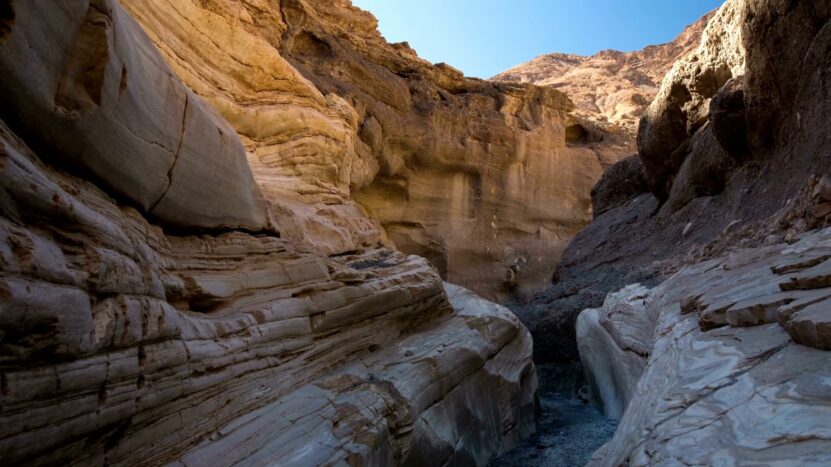
Death Valley National Park has a rich history that dates back to its designation as a national monument in 1933. On February 11th of that year, President Herbert Hoover proclaimed Death Valley a national monument, making it one of the first national monuments in the United States.
The creation of Death Valley National Monument was a response to the growing interest in preserving America’s natural wonders. The designation recognized the unique geology, diverse wildlife, and stunning landscapes of Death Valley, ensuring their protection for future generations.
In 1994, Death Valley National Monument was upgraded to national park status, becoming the largest national park in the lower 48 states. Today, the park attracts millions of visitors each year, who come to explore the park’s unique features, including the lowest point in North America, the Racetrack Playa, and the stunning wildflower displays in the spring.
The park’s rich history is also evident in the numerous historic sites and landmarks, including abandoned mines, ghost towns, and Native American rock art. These sites provide a glimpse into the cultural history of the area and the people who have called Death Valley home for thousands of years.
The Surprising Presence of Fish in Death Valley
When most people think of Death Valley, they imagine a barren, desolate landscape devoid of life. However, there is a surprising presence of fish in this arid environment.
The park’s saltwater springs and streams provide a habitat for several species of fish, including the rare Devil’s Hole pupfish. This small fish, which is only found in one location in the world, is adapted to the unique environment of Death Valley and is a testament to the resilience and adaptability of nature.
Visitors to Death Valley can observe the Devil’s Hole pupfish at the Devil’s Hole area of the park, which is a designated National Wildlife Refuge. The area is protected, and visitors are not allowed to swim or wade in the pool where the pupfish live.
In addition to the Devil’s Hole pupfish, several other species of fish can be found in the park’s springs and streams. These include the Amargosa pupfish, the Death Valley pupfish, and the Ash Meadows killifish.
The presence of fish in Death Valley is a testament to the diversity and adaptability of life, even in the harshest of environments. It’s a reminder that, despite the challenging conditions, there is still life to be found in this unique and fascinating national park.
The Volcanic History of Death Valley
Death Valley National Park has a rich geological history that includes a significant volcanic event. The Ubehebe Crater, located in the northern part of the park, is a testament to this explosive past.
The Ubehebe Crater was formed as a result of a volcanic explosion that occurred approximately 2,000 years ago. The explosion was caused by the interaction of magma with groundwater, creating a steam explosion that propelled volcanic ash and rock into the air.
The explosion left a crater that is approximately half a mile wide and several hundred feet deep. Today, visitors to Death Valley can hike around the rim of the crater and explore the unique geology of the area.
In addition to the Ubehebe Crater, Death Valley is home to several other volcanic features, including lava flows and cinder cones. These features provide a glimpse into the park’s explosive past and offer visitors a unique opportunity to explore the area’s geology.
While the volcanic history of Death Valley may seem like a distant memory, it is still evident in the park’s landscape today. The Ubehebe Crater and other volcanic features serve as a reminder of the dynamic and ever-changing nature of our planet.
FAQ
Q: When is the best time to visit Death Valley National Park?
The best time to visit Death Valley is in the fall, winter, or early spring when temperatures are cooler and more comfortable. Avoid visiting in the peak summer months when temperatures can reach dangerous levels.
Q: Can I camp there?
Yes, Death Valley offers a range of camping options, including nine campgrounds and backcountry camping. However, visitors should be prepared for the extreme heat and limited water sources in the park.
Q: What wildlife can I expect to see in Death Valley National Park?
Death Valley is home to a variety of wildlife, including bighorn sheep, coyotes, bobcats, and several species of reptiles and birds. The park is also home to several unique species of fish, including the rare Devil’s Hole pupfish.
Q: Are there any hiking trails ?
Yes, Death Valley offers a range of hiking trails for all skill levels, from easy walks to challenging backcountry hikes. Some popular trails include Golden Canyon, Badwater Basin, and Telescope Peak.
Q: Is it safe to visit?
While Death Valley can be a challenging environment, it is generally safe for visitors who take the necessary precautions. Visitors should be prepared for the extreme heat, bring plenty of water, and avoid strenuous activity during the hottest part of the day.
Q: What are some of the most popular attractions ?
Some of the most popular attractions in Death Valley include Badwater Basin, the Racetrack Playa, Dante’s View, and the Ubehebe Crater. The park is also home to several historic sites and landmarks, including ghost towns and abandoned mines.
Q: How do I get to Death Valley National Park?
Death Valley is located in both California and Nevada and can be accessed by several major highways. Visitors can fly into nearby airports, including Las Vegas or Los Angeles, and rent a car to drive to the park.
Q: Are there any guided tours available ?
Yes, there are several guided tours available in Death Valley, including Jeep tours, hiking tours, and stargazing tours. Visitors can also join ranger-led programs to learn more about the park’s unique features and history.
Q: What should I pack for a trip?
Visitors to Death Valley should pack plenty of water, sunscreen, and appropriate clothing for the extreme heat. It is also recommended to bring a map or GPS device, a first-aid kit, and a high-clearance vehicle for exploring the park’s backcountry roads.
Q: How long should I plan to spend in Death Valley National Park?
The amount of time visitors should plan to spend in Death Valley depends on their interests and itinerary. To fully explore the park’s unique features and attractions, it is recommended to spend at least two or three days in the area.
Conclusion
In conclusion, Death Valley National Park is a stunning and unique destination that offers visitors a range of landscapes, from snow-capped mountains to lush wildflower meadows and desert plains. The park’s extreme environment and rich history make it a must-see destination for nature enthusiasts, history buffs, and anyone looking for a one-of-a-kind adventure.
If you’re interested in discovering lesser-known information about a stunning national park, check out these surprising facts about a particular location in Montana.

